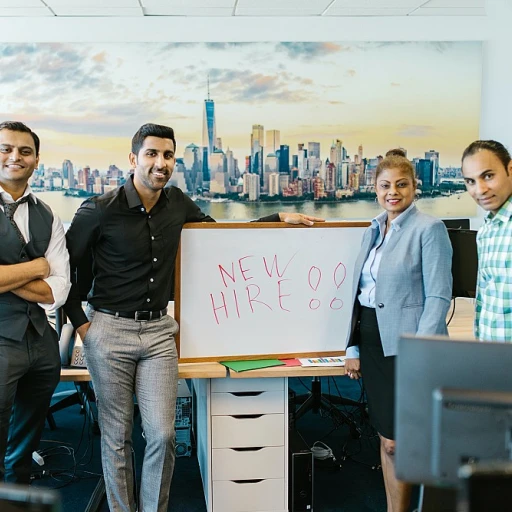
Understanding Favoritism in the Workplace
The Illusive Nature of Favoritism
Favoritism in the workplace can be a complex concept to pin down. It's not merely about a manager showing preference for one employee over another; it is deeply intertwined with how these preferences affect organizational dynamics and individual employment experiences. Favoritism can manifest in many forms, such as preferential treatment in job assignments, promotions, or even day-to-day interactions. Often, these actions can blur the lines between innocent preferences and illegal discrimination practices, making it a challenging issue for both employers and employees.
In its essence, favoritism is the unfair treatment of an employee compared to their colleagues, not based on merit or performance but due to personal biases. This can relate to specific personal characteristics such as age, race color, sexual orientation, or even religion sex. When favoritism translates into illegal discrimination, it can resonate deeply with employees who may feel sidelined or unjustly treated, damaging their trust in the employer and their commitment to the organization.
Understanding the nuances of favoritism is essential, especially as it affects the recruitment and hiring processes. Individuals often question whether their lack of success in job interviews stems from favoritism rather than their qualifications or interview performance. Such perceptions can erode morale and create a toxic work environment characterized by tension and dissatisfaction. Identifying whether favoritism occurred during employment decision making can be difficult, yet it is crucial for maintaining a fair and inclusive workplace.
To fully grasp favoritism’s impact, it is vital to consider not only the immediate consequences but also how these practices can escalate into larger issues such as workplace favoritism and discrimination harassment. These issues may ultimately lead employees to feel forced to sue their employer for unjust actions or seek alternative employment. For more insights, visit our extensive resource on identifying unprofessional conduct in the workplace.
Legal Framework Surrounding Favoritism
Exploring the Legal Boundaries of Favoritism
Favoritism in the workplace and its legal implications can often be confusing, raising questions about when preferences cross the line into illegal discrimination. Legal frameworks, particularly those related to employment law, provide some guidance on this matter. Favoritism is not explicitly illegal unless it violates laws protecting against discrimination based on race, color, religion, sex, national origin, age, sexual orientation, or other protected characteristics. For example, it is perfectly legal for a manager to favor an employee due to personal preference, unless this preferential treatment results in unlawful discrimination or harassment. Employment law prohibits any employment discrimination that leads to unequal treatment of employees based on these protected categories. When preferential treatment in the workplace leads to a hostile work environment or influences decision-making based on bias, it becomes a significant legal issue. Employers are responsible for ensuring that their conduct does not violate employment discrimination laws or privacy policies. Illegal favoritism can result in claims related to sexual harassment, if an employer shows bias affecting employees of a certain gender or orientation. If favoritism at work results in one employee being treated unfairly compared to others due to their age or pregnancy, the affected employee may have the grounds to sue their employer for employment discrimination. Workplace favoritism that gives certain employees unfair advantages based on discriminatory practices is more than just unfair—it’s against the law. Understanding these legal underpinnings helps in identifying illegal favoritism and its impact on the job. For more insights on protecting your rights and managing workplace challenges, consider identifying unprofessional conduct in the workplace. Navigating through these legal intricacies ensures fair and respectful treatment for all, promoting a more equitable work environment.Impact of Favoritism on HR Job Interviews
Examining the Role of Favoritism in Job Interviews
When it comes to HR job interviews, the presence of favoritism can create significant issues within the workplace, often impacting the fairness and integrity of the hiring process. The key to understanding this lies in identifying how favoritism manifests and the effect it has on potential employees.
Favoritism in workplace settings frequently leads to preferential treatment, where certain candidates may receive privileged consideration over others based on connections rather than qualifications. This preferential treatment can easily blur the lines between fair employment practices and illegal discrimination, potentially violating employment law. An effective way to showcase peer recognition can be instrumental in counteracting prejudiced decision-making based on favoritism. By bringing attention to merit-based achievements, candidates can better navigate the challenges posed by preferential treatment.
Not only does favoritism threaten the principle of equal opportunity employment, but it can also lead to issues of discrimination regarding race, color, national origin, religion, sex, and sexual orientation. In scenarios where favoritism influences employment decisions, an employer may unwittingly foster an environment conducive to employment discrimination and harassment.
Managers and HR professionals must stay vigilant against the subtle presence of favoritism in their decision-making processes, as their responsibility is to create a work environment devoid of illegal favoritism. Providing structured interviews, standardized evaluation criteria, and implementing a transparent privacy policy can assist in mitigating these latent biases. Thus, maintaining an impartial hiring process guards the organization against illegal actions and fosters a workplace where every individual feels valued and respected.
Identifying Favoritism in the Interview Process
Spotting Favoritism During Interviews
The interview process, ideally, should focus on objective evaluation of each candidate's skills, experience, and fit for a position. However, instances of favoritism, where preference is given to certain individuals without merit, can severely compromise this process. Recognizing the subtle cues of favoritism in HR job interviews can help maintain fairness and prevent potential discrimination. One of the key indicators of favoritism is when certain candidates receive noticeably preferential treatment from interviewers. This might be reflected in the form of additional time taken to engage with them compared to others. It could also show in the kind of questions asked; for example, a candidate might only receive easy or less challenging questions, which doesn't test their true capability. Moreover, if interviews take place in a setting that seems to favor certain candidates, such as an overly familiar or informal tone for some and not for others, it could be a red flag. Additionally, if a manager is seen repeatedly referencing subjective details about certain candidates' backgrounds or personal life in the decision-making process, it might indicate biased treatment. Another sign could involve lopsided access to interview materials or insights on the company's hiring criteria. Some candidates might be privy to insider information, either intentionally or inadvertently, giving them an unfair advantage. Finally, observe the language used in feedback or debriefing meetings where candidates’ qualifications are discussed. Language that diminishes certain candidates on the basis of national origin, race color, religion sex, age, orientation pregnancy, or sexual orientation, opening doors to illegal discrimination, should be closely monitored. Recognizing these clues is pivotal in curbing workplace favoritism and ensuring that employment decisions are made fairly and legally. Such vigilance helps in guarding the integrity of the hiring process and promotes a work environment free from bias and employment discrimination. This aligns with employment law principles and ensures that each candidate is assessed fairly, fostering an inclusive recruitment space.Mitigating Favoritism in HR Practices
Steps to Curb Favoritism in HR Practices
Reducing favoritism in workplace practices, especially during HR activities, requires a proactive strategy from employers. Below, we highlight several actions organizations can implement to foster an equitable work environment.- Establish Clear Guidelines: Organizations must define explicit policies that forbid favoritism and any form of discrimination. A well-documented anti-discrimination policy enhances transparency and accountability.
- Training and Awareness: Provide training sessions focusing on the importance of impartiality. Managers and employees should be educated on recognizing and avoiding biased behaviors, including race color and gender-related preferential treatment.
- Standardized Procedures: Implement consistent criteria for job interviews and employee evaluations. Standardized decision-making processes help prevent the influence of unconscious biases and favoritism.
- Promote an Inclusive Culture: An inclusive workplace culture discourages illegal discrimination and favoritism. Encourage dialogue on diversity by addressing any national origin, sexual orientation, and age concerns.
- Confidential Reporting Mechanisms: Develop channels for employees to report favoritism in a secure and confidential manner. Employees should feel safe to express concerns about unfair treatment without fear of retaliation.












